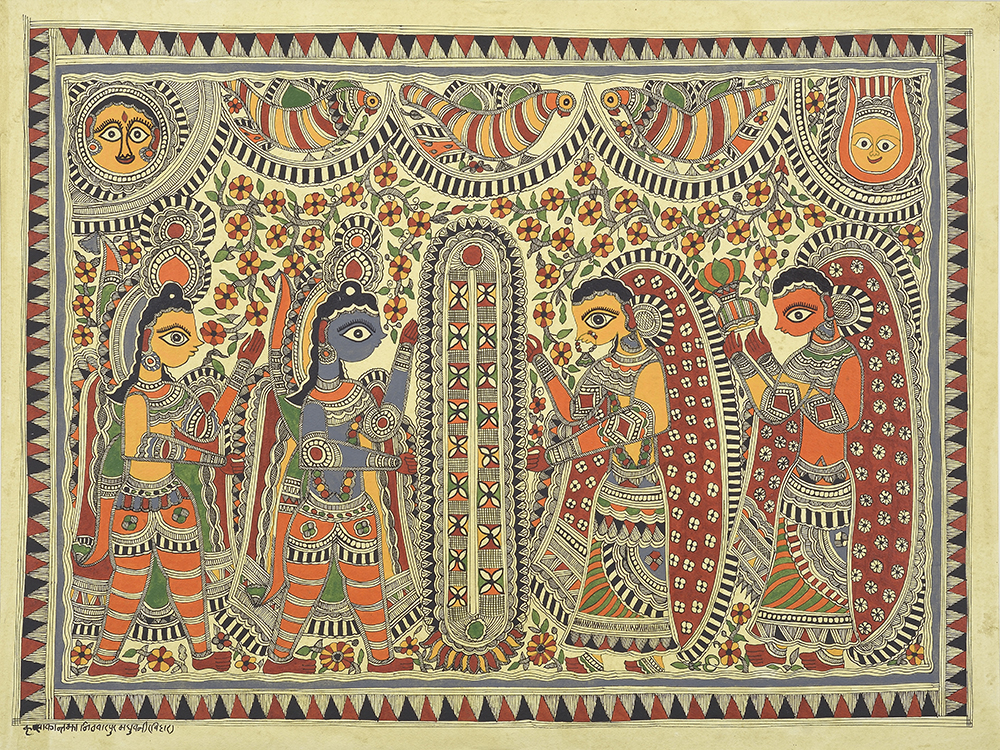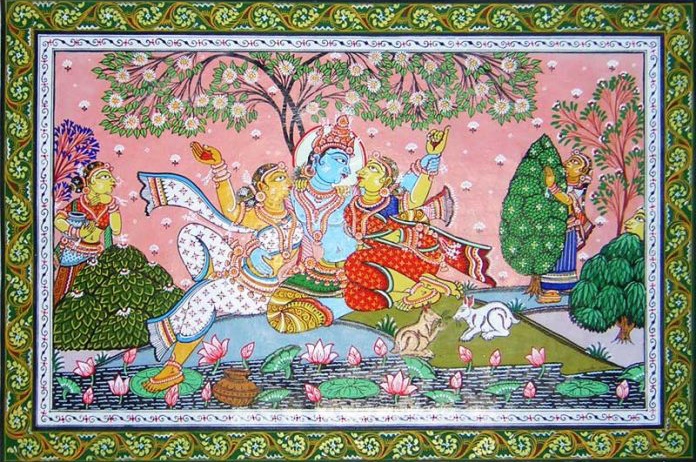Indian art and culture are one of the most fascinating cultures. It is a place where stories are told through art, dance, music, food, and customs.
The Indian folk arts are an important part of the nation’s culture and identity because they are directly connected with spiritual nature of people’s lives.
Indian Art and Culture has always been a treasure of cultures and traditions. It is also one of the few places in the world that have preserved centuries-old art through its diverse heritage and practices. Indian folk arts are culturally based art forms that are handed down through generations. These traditional art forms include music, dancing, puppetry, storytelling, and much more. This is a very unique feature of Indian Art and Culture.
Indian Folk art is the term used to refer to artistic expressions made by hand, continues to be relevant and popular in India even today. The art forms are not only practiced by rural folk but also enjoyed by city dwellers and are quite in these days.
Indian folk art is the country’s heritage and can be representative of the culture. It is the most original work of art because it is born out of the soul of the people.
The Indian government has taken many initiatives to keep this rich cultural traditional art alive. They are making its access easy for future generations and organisation of exhibitions and shows are helping them preserve and spread throughout the nation. People are getting to know about it through various forms and are keen interested in learning or using them in modified forms such as art on bags, dresses, home décor, utensils and more.
There are many forms and varieties of Indian Folk Art. But today we’ll discuss about the three famous art forms and they are: Madhubani, Pattachitra and Warli.

Madhubani Painting
Also known as Mithila painting, famous from Bihar, is a traditional painting that uses geometry patterns, line drawings with contrasting and bright colours. The paintings are from the time of Raja Janak, a King in Mithila who asked their subjects to decorate the whole region at the time of her daughter’s marriage, Sita to Lord Rama. Historically, this style of paintings passed from generations to generations. The five distinctive styles are Bharni, Kachni, Tantrik, Godna and Kohbar.
These paintings are always two dimensional and come with really very less or no blank spaces in between. They comprise of animals, birds, flowers and other geometric patterns such as lines, squares, etc. They are created with natural dyes and a variety of tools which are used for thin and fine lines. The patterns created are very pretty and pleasing for eyes of the viewer.
Madhubani paintings often depict scenes of traditional rituals such as marriage and depict scenes of nature. Natural objects like the sun, the moon, and tribal plants like tulsi are often painted in traditional art with scenes from daily life.
These paintings are among the most famous forms of paintings of the world. They express the creativity and sensitivity of the people especially, Mithila region. These paintings are predominantly made by women and thus it signifies a very important role in the male dominated society.
Moreover, tourism today is growing at a rapid pace and Madhubani paintings are also creating employment opportunities and this style is capable enough to even attract foreign tourists. This style is again emerging into the common world and acts as a major art form of the artistic canvas world.

Pattachitra Painting
Also one of the famous forms of folk art in India, and this is from states of Orissa and Bengal. It consists primarily in paintings on cloth and depicts mostly Hindu divinities. “Patta” means “cloth” and “Chitra” means “painting”. It is a traditional Indian folk art of Orissa that’s been around for centuries. It was originally used for rituals and as mementos to pilgrims. Today, it can be seen on everything from walls to boxes of sweets.
The paintings of Odisha can be divided into three broad categories from the point of view of medium, i.e. paintings on cloth or ‘Patta Chitra’, paintings on walls or ‘Bhitti Chitra’ and palm leaf engravings or “Tala Patra Chitra’ or “Pothi, Chitra’.
This style of painting is done with 4 colors, red, yellow, white & black.
Bengal Pattachitra is a traditional genre of painting from West Bengal. It’s also known as the Maha Pattachitra and is dated back to ancient times. It includes different styles, for example Durga Pat, Chalchitra, Tribal Pattachitra and Medinipur Pattachitra.
The subject matter of Bengal Pattachitra is mostly religion, myths, folk stories and social people.
Pattachitra is of immense historical tradition of India.

Warli Painting
Warli painting from Maharashtra is one of the oldest styles of Indian folk art that’s managed to persist for thousands of years. Warli paintings are mainly created by Tribal people from North Sahyabadri Range in India.
The Warli tribe is one of the largest in India, located outside of Mumbai. Inspite of being so close to one of the most populated and metro cities, Warli tribe still manages to practice this art and are also making it famous throughout the world. The Warli culture is centered on the concept of Mother Nature and elements of nature are often focal points depicted in Warli painting.
Many Warli paintings depict the Tarpa dance as a central component. The Tarpa is a kind of trumpet-like instrument that different men take turns for playing.
Warli artists often use their clay huts as a backdrop for their paintings, as people did with the cave paintings before them. These basic wall paintings use simple geometric shapes: a circle, triangle and square. These shapes represent different aspects of nature. The circle and the triangle come from their observation of nature. The circle represents the sun and the moon, while the triangle is derived from mountains and pointed trees.
The human body is represented by two intersecting triangles: the top triangle represents the torso, the bottom one represents the pelvis. Their precarious equilibrium symbolizes the balance of the universe. The representation also has the practical and amusing advantage of animating the bodies. Warli art often depicts triangles which are different sizes depending on their gender. A triangle is usually larger or wider at the top if it represents a man, and wider towards the bottom if it represents a woman.
Warli artists have traditionally not used a straight line but a series of dots and dashes. However modern artists have begun to draw straight lines in their Warli art style paintings. While they still adhere to tradition – acceptance of new ideas helps them face new challenges from market demands. Artists are now painting on paper and cloth. Warli motifs are also finding expression on pottery, and on lifestyle products including home décor and accessories. Warli art is however most impactful when done on walls or in the form of huge murals that bring out the magical world of the tribal people.
Efforts are being taken by artists organisations and also by government to have a place in the global world and economy. Warli tribe is also being protected by them and thus increasing employment opportunities.
The Indian culture and tradition are the one which has been passed from generation to generation and these folk arts are a part of it. We need to preserve this art and make them globally recognizable. The problem is that these Indian folk arts are dying out as people take them less seriously and do not pass them on to the next generation. The reason for this is that there are few incentives to keep these Indian folk arts alive. There are also few opportunities for these artists to create their works without competition from dealers and showrooms who are selling ready-made products at cheaper prices. They are considered exotic and indigenous but are not shared or promoted on a global scale. With the advancements in technology and media, more and more people will hopefully get interested in these Indian folk-art forms.
Therefore, we should take a step forward to share these Indian folk- arts to give them a recognition and also to keep them alive as a part of our wide heritage and tradition.